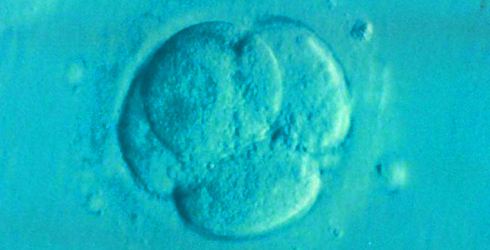
US researchers develop a new stem cell-based human embryo model
In a bid to understand the mechanisms of a wide range of diseases and conditions that involve early human development, including developmental disorders, birth defects, genetic disorders, and diseases that arise during embryonic development, including certain types of cancer or neurological disorders, researchers from the University of Texas Southwestern Medical Centre have created a new stem cell-based human embryo model for studying early human development, tissue creation, and differentiation, making significant advances in the fields of developmental biology and regenerative medicine.
Peri-gastruloids are embryonic structures, which encompass both embryonic and extraembryonic (hypoblast) tissues and can develop into many distinct cell types in the body, offering insight into the earliest stages of embryogenesis.
According to the researchers, their findings on peri-gastruloids, published recently in the journal Cell, could have an impact on a wide range of diseases and conditions involving early human development, such as developmental disorders, birth defects, genetic disorders, and diseases that arise during embryonic development, such as certain types of cancer or neurological disorders.
They further noted that Peri-gastruloid studies can potentially help with disease modelling and medication testing.
Gastrulation is a "black box" of human development in which an embryo reorganises itself from a hollow spherical structure to a multilayered structure.
Because of bioethical considerations, human embryos are normally not cultivated for more than 14 days, and gastrulation occurs between 17 and 21 days post-fertilisation.
Furthermore, existing stem cell models that simulate gastrulation do not include the extraembryonic components that give birth to the yolk sac and placenta.
UT Southwestern Medical Centre researchers disclose a new approach for developing "peri-gastruloids," an embryo-like structure that includes one of the supporting tissues, the yolk sac, that was lacking in prior models.
Explaining the findings, assistant professor of molecular biology and Virginia Murchison Linthicum Scholar in Medical Research and member of the Harold C. Simmons Comprehensive Cancer Centre at UT Southwestern said, "By generating peri-gastruloids, researchers can mimic and study the complex processes that occur during gastrulation and early organ formation, which is a critical period in embryonic development."
"This allows for a better understanding of the molecular and cellular events that shape the formation of different tissue layers," he added.
Pointing out that studying peri-gastruloids allows researchers to gain insights into how abnormalities or genetic mutations can impact the early stages of human development, he further added, "This knowledge can be used to model and understand developmental disorders or diseases that arise during early embryonic development. In addition, peri-gastruloids can serve as a platform for testing the efficacy and safety of potential drugs or therapies targeting these conditions."
Commenting on the study findings, lead author Dr Lizhong Liu said, "The ability to model human development using peri-gastruloids can provide insights into the mechanisms behind tissue formation and differentiation."
"This knowledge can be applied to improve regenerative medicine approaches, such as generating specific cell types or tissues for transplantation or repairing damaged organs," he added.
While in vitro stem cell models that recapitulate human gastrulation lack essential extraembryonic cells for embryonic development, morphogenesis, and patterning, the new approach prompts human pluripotent stem cells to self-organise into peri-gastruloids, which encompass both embryonic and extraembryonic tissues.
Although not viable due to trophoblast exclusion, peri-gastruloids can simulate critical stages of human peri-gastrulation development, including amniotic and yolk sac cavities, embryonic discs, primordial germ cells, primary germ layer formation, and early organ formations.
Researchers may delve into the underlying mechanisms and uncover possible therapeutic targets for developing innovative medicines or interventions for patients by mimicking circumstances in vitro.
Furthermore, they can also test the effectiveness and possible adverse effects of various medications or chemicals on peri-gastruloids, which in turn can aid in identifying interesting drug candidates as well as the safety of pharmacological treatments before testing in human clinical trials.